
views
Checking Your Requirements

Meet with a lawyer. The easiest way to find your requirements for declaring a missing person dead is to meet with a lawyer. A qualified attorney will be well-versed in the requirements and can also help you file your claim/petition. To find a qualified probate attorney, you can contact your local or state bar association. Ask for a referral. After you get a referral, you can call and schedule a half hour consultation. Most lawyers offer consultations for a reduced price or for free.
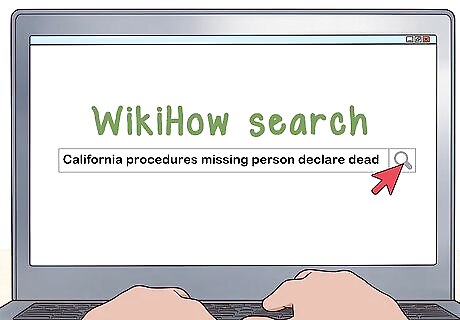
Search the Internet. Your government’s requirements may be posted online. You can search by typing “your state or country” and “procedures missing person declare dead.” Many states publish their legal codes online. If you find your relevant code, read it and take notes. The code should tell you what steps you need to take.
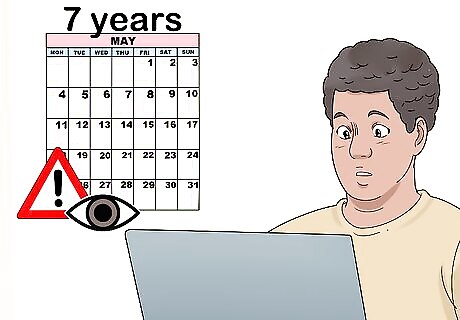
Check how much time must pass to be presumed dead. A person does not need to be missing for a certain amount of time to be declared dead. Instead, the government may state that after a certain number of years a person is “presumed” dead. This means that you don’t need to submit any evidence showing the person is actually dead once enough time has passed. For example, your government may state that a person is presumed dead if they have been missing seven years. If you have had continuous lack of contact for more than seven years, then you don’t need to show that it is likely the person is dead. However, you don’t have to wait seven years. For example, someone might have witnessed your spouse be swept over the side of a boat and dragged into the ocean. In this situation, the court might find that there is sufficient evidence to conclude the person likely died.
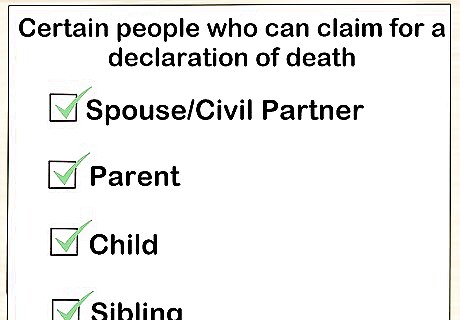
Check if you can request the declaration. Only certain people can petition for a declaration of death. The precise list of people who are authorized to petition the court will differ by country and state. In England or Wales, for example, the following people can make a claim: spouse or civil partner parent child sibling
Gathering Evidence
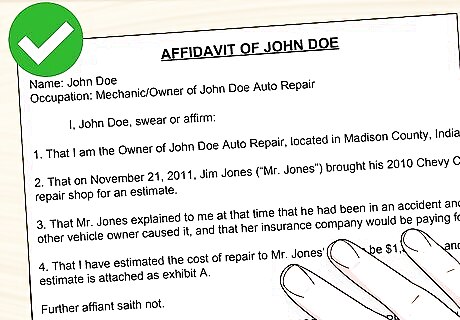
Take witness statements. If someone saw your family member in imminent danger of death, then you should get witness statements. For example, someone might have seen your relative fall into the ocean or enter a building that collapsed. If the body cannot be found, you will need witness statements to describe the imminent danger faced by the missing person. You should have witnesses sign an affidavit, so that you can submit this person’s testimony to a court when you petition for a declaration of death.

Get copies of police reports. If a police report was filed about an accident or disaster, then you should get a copy. You can submit it with your petition. To get a copy of any police report, see Obtain a Police Report.
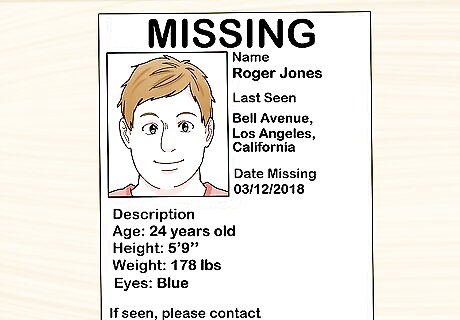
Perform a diligent search for the missing person. Generally, you have to make a concerted effort to find a missing person. You cannot just sit back and wait for the missing person to contact you. To show that you have made a diligent search, you should do the following: Notify law enforcement that the person is missing. Hire a private investigator to search for the missing person, if you can afford one. Advertise in newspapers or periodicals that the person is missing and provide contact information so that people with information can contact you.
Petitioning a Probate Court

Find the appropriate court. Your government’s law will tell you which court to file your petition with. Generally, you will need to petition the court in the county where the missing person last lived. This county might not be where you live today. For example, your spouse might have disappeared when you were living in Cook County, Illinois. After seven years have passed, you have moved to North Carolina. You will have to get a court in Cook County to declare your spouse dead.
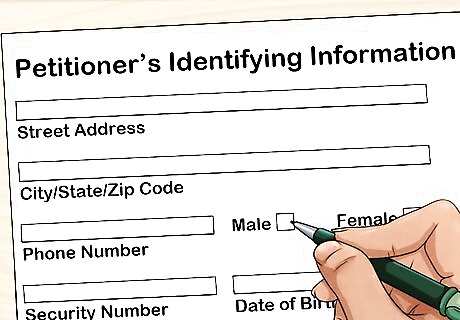
Draft a petition. Your court may have printed “fill in the blank” forms that you can use. You can find these forms by checking online or with the court clerk. It is probably easiest to search the Internet first. If you don’t find anything, stop into your local probate court.

File the petition. Generally, you can file the petition by stopping into court and asking to file. In some places, you may be able to file by mailing the petition to the court. Always be sure to keep a copy of the petition for your records. Submit copies of supporting evidence along with the petition, such as police reports or witness affidavits.

Pay the fee. You usually have to pay a fee in order to file the petition. The fee will vary depending on your country and state. Look at your form: it should contain fee information.

Send a copy of the petition to other family members. Your court may require that you send copies of your petition to people and institutions which have an interest in whether the missing person is declared legally dead. For example, you might have to inform any of the following: the missing person’s spouse or civil partner other family members of the missing person, such as siblings or children any organization with an interest in the missing person, such as an insurance company
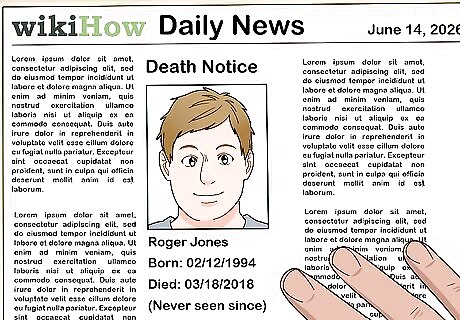
Advertise the complaint. Your government probably also requires that you advertise the complaint in a local newspaper. The purpose of advertising is to notify others in the community that you are trying to have the missing person declared dead. If someone in the community objects, then they can raise their objection at the hearing. The length of time the advertisement must run will differ depending on your law. Read your government’s requirements. In England and Wales, for example, you must advertise in a newspaper located near the missing person’s last known address. The advertisement must appear within 7 days of your application. The UK government’s website has a sample text you can use. In Ohio, for example, you must advertise once a week for four weeks in a newspaper located in the county where you filed your petition.

Keep proof of the advertisement. You will probably have to file proof of the advertisement with the court. The court will not go looking on its own. Instead, you should save several copies of the newspaper and submit the advertisements to the court. There may be timelines involved. For example, you might have to send the advertisement to the court five days before your hearing, or earlier. Check with your court.

Attend a court hearing. Within a couple months of submitting your petition, you will probably have a hearing in court. You should take a copy of your petition as well as any supporting evidence, such as police reports/witness statements. Another family member or a member of the public might show up to challenge the declaration of death. If enough time has passed so that the presumption of death applies, then the challenger will have to produce evidence that the missing person is alive. There may be several hearings, especially if someone challenges your petition or if the court does not think you have performed a diligent search.
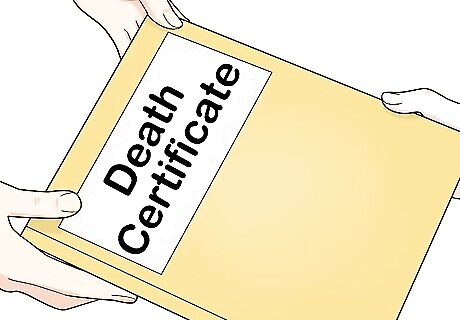
Get the death certificate. You can only get a copy of the death certificate if the judge declares the person presumed dead. You can ask the court clerk about how to get a copy and how much you must pay for each copy. You should get several copies. You may need to show copies to a trustee, insurance company, or a bank. You should also keep a copy for your records.














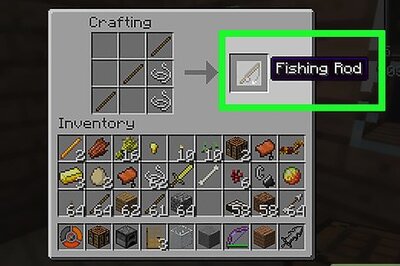





Comments
0 comment